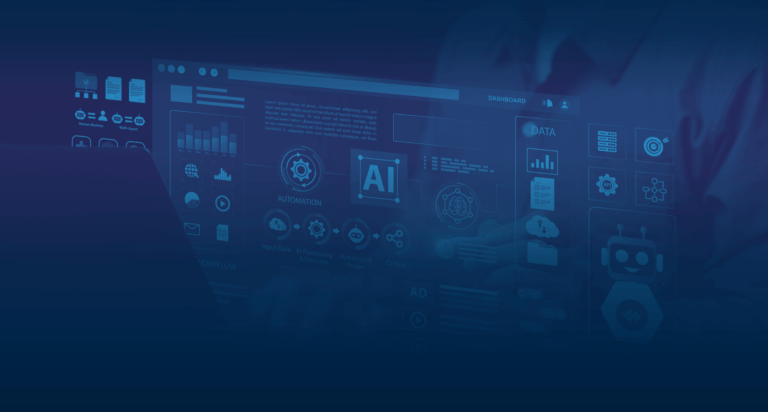
From Customer Support to Customer Delight
The customer helpdesk has traditionally been focused on reaction to customer calls, but what if you focused attention on predicting what customers need and when they need it?
Instead of applying AI to drive efficiency, explore how it can be used to predict what customers need, to prevent them from needing help in the first place. Creating individual deals and offers that reflect what customers need at the right time – using the power of prediction and personalization to build a longer-lasting customer relationship.
Introduction: AI Skepticism and “AI Winter”
Not every corporate leader is convinced that Artificial Intelligence (AI) is going to help their business. If you look at Google Trends, you can see that the discussion around the impending “AI winter” has exploded since July this year.
Many executives are reacting to technology solutions that over-promised and under-delivered. Recent research from MIT suggests that 95% of businesses cannot measure any financial return from their investment in Generative AI. Over 80% of companies claim to have been running pilots using AI, but few can point to a financial return.
The Real Problem: Misapplied AI
The real problem is how AI has been deployed. AI is an extremely powerful and transformative tool that can help any business, but it needs expertise, planning, and it helps if you are looking to solve a real business problem with AI, rather than just asking ‘what can we do with AI?’
This last point is related to the FOMO that took over the strategy process in many companies over the past couple of years. This new wave of technology is so exciting that many executives signed off budgets on pilots and experiments that were hard to scale up or were never going to work.
Understanding AI’s True Strengths
If you want AI to really work for your business, then you need to understand what this tool can achieve. This is an impressive technology that can sift and sort vast amounts of data rapidly. It can generate insight from disparate sources of information. It can take a huge chunk of source material and summarize it in seconds.
If you are designing solutions where these strengths will be transformative, then you can enjoy your status as one of the businesses genuinely using AI to create innovation for your customers.
From Reactive to Predictive Customer Service
DATAMARK features several good examples. Contact centers managing customer service processes have traditionally focused on the ability to respond to customers. It’s a reactive process waiting for calls and then handling them.
But the data analysis capabilities of AI allow a customer service team to also start anticipating what customers need – and when. If you have the purchase history of the customer, you know all their browsing preferences, what they like, what they avoid, and when they like to buy, then you have an insight into exactly what your customer wants and needs.
Connect this insight into your knowledge of their communication history – have they called customer service recently? What was it about? Was that problem resolved quickly? Add some external data – like traffic or weather – and you can build a very powerful predictive engine.
Real-World Use Cases of Predictive AI
It’s easy to imagine AI being used to create a far more proactive customer service process in a number of areas:
Boost Sales: your customer service agent knows the purchase history and preferences of the customer they are talking to. The AI can even suggest a specific one-off discount for an individual customer. Cross-selling and upselling never feel like a “hard sell” if the agent knows exactly what the customer likes to buy.
Manage Delays: Telling a customer about a problem before it happens can prevent a wave of dissatisfied calls. A delayed delivery. A flight that has been cancelled. Give the customer the information in advance and, where possible, update their plans. Rebook that flight and send the new boarding pass, so the customer feels the problem is already resolved.
Predict Outages: an electricity utility telling customers the exact time they will not have power, or an internet service provider informing customers of maintenance work on their systems. Keeping customers informed before something happens is better than managing the complaints when your customers start calling.
Prevent Churn: The signs will be there when a customer is considering the cancellation of a subscription service. Your AI analysis can trigger a focus on proactively contacting at-risk customers with a pre-authorized deal ready for them if they commit to renew.
Encouragement: a new customer stalls during the onboarding process, or a customer has filled their cart but doesn’t seem sure about completing the checkout process. The AI can identify the signs and trigger the intervention of a friendly agent saying, ‘Hey, can I help?’ Cart abandonment averages over 70% now, so the value of not losing all those purchases is obvious.
Manage Risk: What if home insurance companies sent tips on damage prevention to customers who may soon be coping with a hurricane in their area? Companies can automatically reach out to customers who may be at risk, offering immediate and practical help. It may or may not help directly, but it shows that the company is ready to help when needed. This will be remembered at renewal time.

Why Proactive AI Matters
Many executives have focused on AI as a tool that can generate greater efficiency or productivity. Others have struggled to make the technology work for their business. We should all be more imaginative. This ability to predict what your customer needs before they ever need to call and ask for help is one of the most powerful, genuine use cases.
This is a truly transformative use of AI, and it really works. Our team can direct you to the case studies.
Conclusion: The Future of Customer Delight
Proactive customer service can drive new revenue, prevent churn, and deflect complaints by anticipating problems before they happen. How would your customers react if your business started anticipating everything they need?
Let me know what you think, and contact my team for a complimentary consultation for more info.





